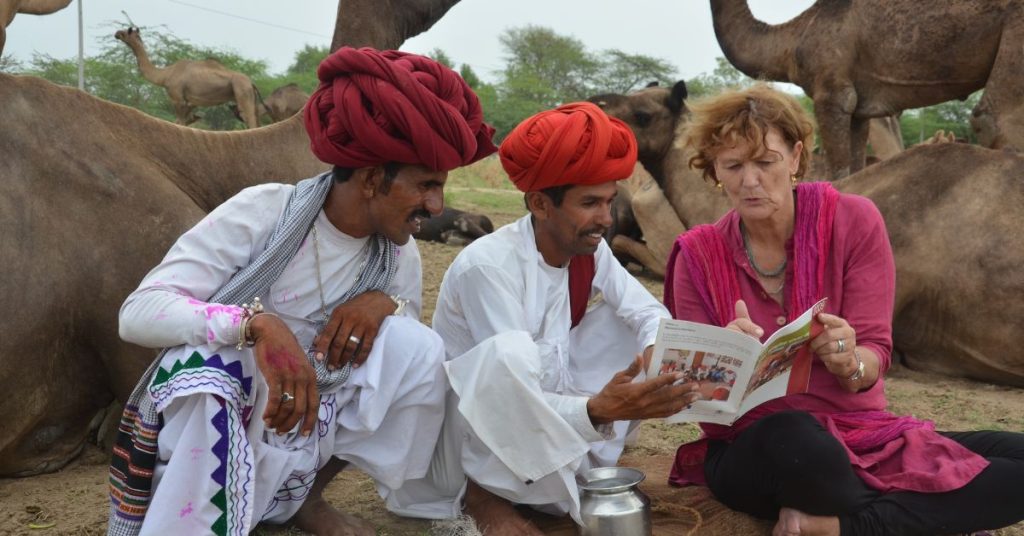Articles
‘Camel Charisma’: A German Vet, A Rajasthan Man, & Camel Milk Are Helping The Raika Community Earn
In Sadri, Rajasthan, the Raika community, known for herding camels, has shifted from trading to sustainable camel milk production through Camel Charisma. This social enterprise, led by Dr Ilse Köhler-Rollefson and Hanwant Singh Rathore, is helping preserve the Raikas’ way of life and livelihood.

Welcome to Sadri town in the Pali district of Rajasthan. Sightings of men dressed in white angrakhas (a tunic-like dress) complete with colourful turbans (most often crimson) that shelter their heads from the blazing heat will dot your visit.
These are members of the Raika community.
The pastoral community has been herding camels for centuries. What distinguishes them, aside from their attire, is that they never travel solo. Within metres, you’ll spot their closest friends — distinguished by a hump, long lashes, bushy eyebrows, and thick pursed lips.
Stately creatures, the camels seem content. The darkening sky and the spring in their step suggest a long day of grazing on thistles (the remnants in the fields following harvest) is now complete. Having watched and closely engaged with the camels for over three decades now, Germany’s Dr Ilse Köhler-Rollefson has a good measure of an informed opinion on camel behaviour.
She points out that thistles while forming a bulk of the camel’s nutrition, aren’t the only plants they feed on. And this is backed by solid reasoning.
The co-founder of Camel Charisma goes on, “According to traditional knowledge, camels eat 36 different plants.” The green diversity boosts milk production and quality, she points out. Considering that dairy is the prime occupation of the Raika community, milk quality is vital.
It is of essence to note that only in the recent past has dairy emerged as a focus industry for the community. If the humped creatures could speak, they would tell of how their ancestors enjoyed a different set of privileges.
Come November, their predecessors were decked in finery and embroidered cloths as they made their way to the Pushkar Mela — an annual multi-day livestock fair dating back to the 19th century. Here, they were traded as modes of transport in exchange for handsome sums of money to the tune of lakhs.
Reminiscing about those times, Karan Ram, one of the members of the Raika community, who often accompanied his family to these events, shares, “We [the Raika community] would earn a lot through the mela (town fair). In fact, we used to make more money in that one month than we would all year,” he smiles.
But in 2014, things changed.
The Government took cognisance of the camel’s declining population in the state of Rajasthan — a 54 percent plummet in numbers between the years 1998 and 2012 (according to an article in Down To Earth). In response to this, the camel was declared the state animal of Rajasthan.

This was followed by the Rajasthan Camel (Prohibition of Slaughter and Regulation of Temporary Migration or Export) Act (2015) which banned the slaughter, trading, and unauthorised transportation of camels in the state.


